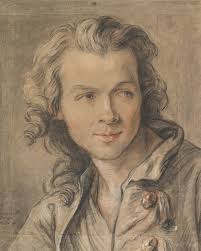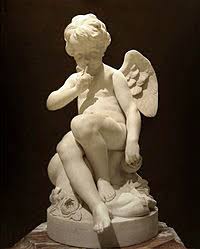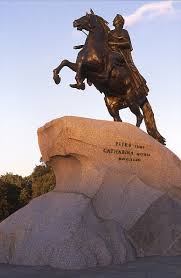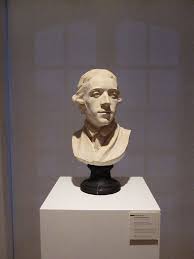Étienne Maurice Falconet (1716–1791) was one of the leading French sculptors of the 18th century. His career spanned several decades, during which he produced a range of works that showcased his talent and versatility.
Table of Contents
Life of Etienne Falconet
Etienne Maurice Falconet was born on 1st December 1716 in Paris and died on 24 January 1791. Falconet was one of the most celebrated sculptors of his age, as he adapted the classical bravura of the French Baroque to an intimate and decorative Rococo ideal.

Falconet was patronized by Mme de Pompadour, known as the best for his small sculptures on mythological and genre themes and also for various designs made for Sevrès porcelain factory.
Works of Etienne Maurice Falconet
Falconet studied with the sculptor Jean-Baptiste Lemoyne. And in 1754 he was admitted as a member of the Royal Academy of Painting and Sculpture. With this achievement, he became the director of sculpture at the Sevrès porcelain factory in1757 and was further responsible for designing statuettes and other decorative items such as Venus and Cupid, and some series of nude female bathers.
One of the most important patrons of Falconet was Louis XV’s mistress, Madame de Pompadour, who was the leader of taste and fashion and had a precise interest in the Sevres factory. Falconet also executed some monumental and religious work.
In 1766 he was subpoenaed to Russia by Catherine II to produce a bronze equestrian statue of Peter the Great of St. Petersburg. In this monument, Falconet reverts to the grandiose splendor of baroque.

Falconet’s early productions such as his marble Milo of Croton and the Lion show that he was intensely influenced by Gian Lorenzo Bernini, the great Italian baroque sculptor of the 17th century, and by Pierre Puget.
Etienne-Maurice Falconet’s Sculptures
During the 1750s, Falconet’s work of the marble Allegory of Music, the terra-cotta Allegory of Hunting, and his marble Cupid Warning displays a great skill of combining a rococo taste for intimacy, refined elegance, and delicate textures with smooth lines and sleek modeling characteristics of style which reflects Neoclassicism.
He produced a reasonably small amount of sculptures but his work is undoubtedly remarkable in its variety. Falconet left Russia in 1788 and soon after he suffered a debilitating stroke and died on 24th January 1791 in Paris. He is remembered for his work and writings such as Reflexions Sure Sculpture i.e. Reflections on Sculpture.
Etienne Maurice Falconet’s Family Life
Pierre Etienne Falconet, a portrait painter was born in Paris in 1714. He was the son of the sculptor Etienne Maurice Falconet. His father who was friendly with Joshua Reynolds sent him to England to work under the painter’s direction, whereas his first studies were probably in the French Academy.

Pierre came to London in 1766, in which he obtained a premium of twenty guineas for a painting in chiaroscuro, and again in 1768 he gained another of twenty-six guineas for a historical composition.
He was made a member of the Incorporated Society of Artists and contributed to their exhibitions from 1767 to 1773.

After returning to France, he married Marie Anne Collot, who was his father’s assistant and was a sculptor too. With Collot, he had a daughter, Madame Jankowitz. He painted a lot and died in 1791.
Here are some of his most notable achievements:
- Directorship at the Manufacture Royale de Sèvres:
- Falconet was appointed the director of sculpture at the prestigious Manufacture Royale de Sèvres. This porcelain factory was renowned for its exquisite pieces, and under Falconet’s direction, it produced some of the finest porcelain sculptures, drawing acclaim from all over Europe.
- “The Bronze Horseman”:
- Perhaps Falconet’s most iconic work is the equestrian statue of Peter the Great, known as “The Bronze Horseman,” located in St. Petersburg, Russia. Commissioned by Catherine the Great, this monumental statue showcases Peter the Great as a determined leader, looking out towards the West. It became a significant symbol of St. Petersburg and remains one of the city’s most recognized landmarks.
- Works for Madame de Pompadour:
- Madame de Pompadour, the chief mistress of Louis XV and a significant patron of the arts, commissioned Falconet for several sculptures. His works for her include the beautiful and delicate “Seated Cupid” which, after its creation, was praised as a masterpiece of sentiment and tenderness.
- Collaboration with Denis Diderot:
- Falconet’s correspondence with the philosopher Denis Diderot, during his time in Russia, offers fascinating insights into the intellectual currents of the time. Their discussions ranged from art theory to the challenges Falconet faced during his work on the Peter the Great statue. These letters were later published, providing valuable context on the intersections of art and philosophy during the Enlightenment.
- Membership in the Royal Academy:
- Falconet was admitted to the Royal Academy of Painting and Sculpture in 1754. This was a significant recognition of his talent and contribution to the arts.
- Variety in Sculpture:
- Falconet’s oeuvre is characterized by a wide range of subjects and styles. He created both monumental public sculptures and smaller, more intimate pieces. Regardless of size, his works often exuded a sense of movement and emotional intensity, setting them apart from the more static sculptures of some of his contemporaries.
Conclusion:
Étienne Maurice Falconet’s achievements mark him as a key figure in 18th-century French sculpture. His works, characterized by their emotive power and technical prowess, have cemented his reputation as one of the era’s leading artists. Whether in monumental public statues or delicate porcelain pieces, Falconet’s artistry and vision shine through, leaving an indelible mark on the world of sculpture.
More Info On- Falconet-Etienne Maurice, Antoine Louis Barye, John M Steele